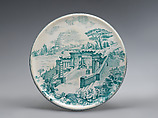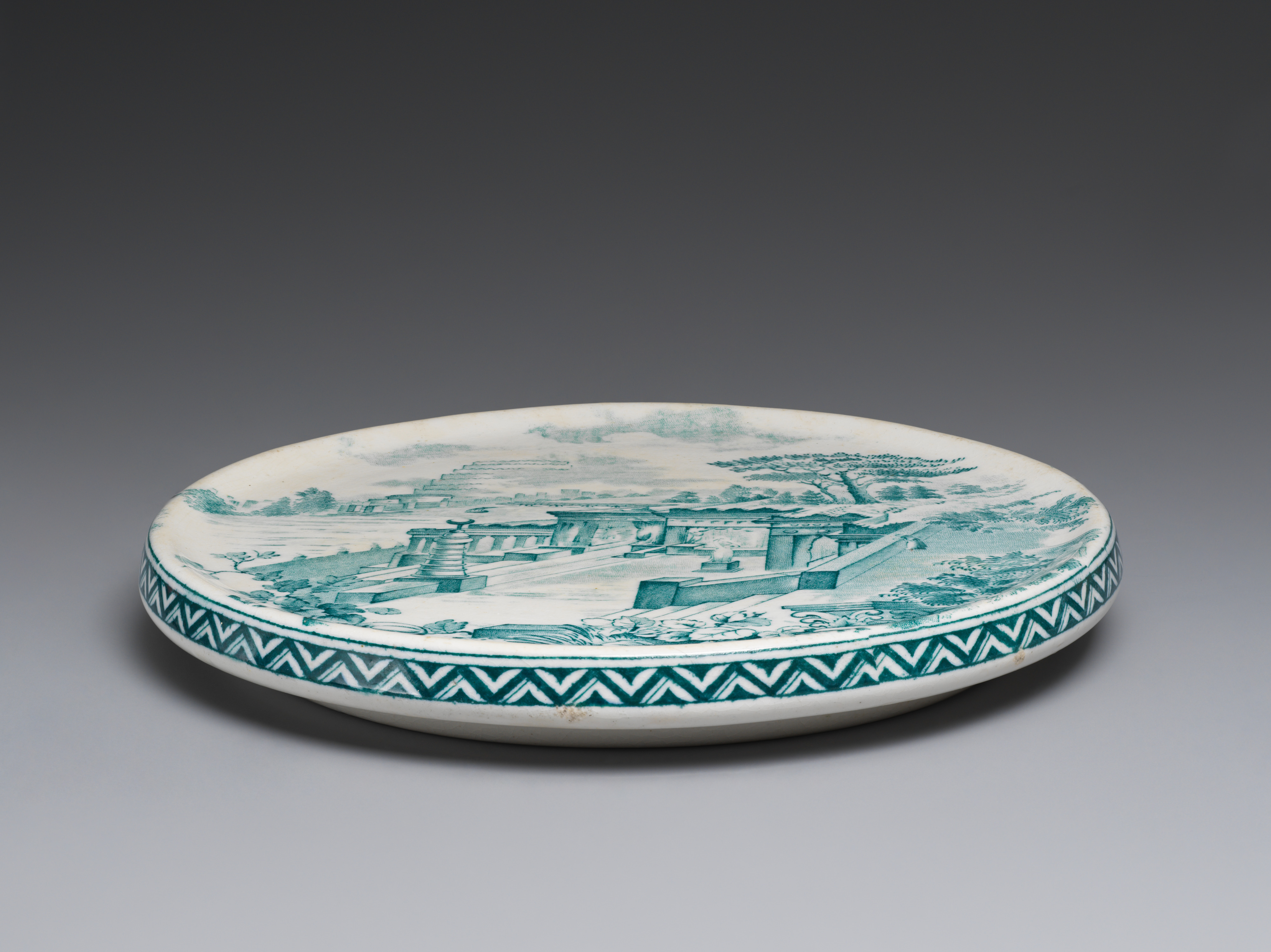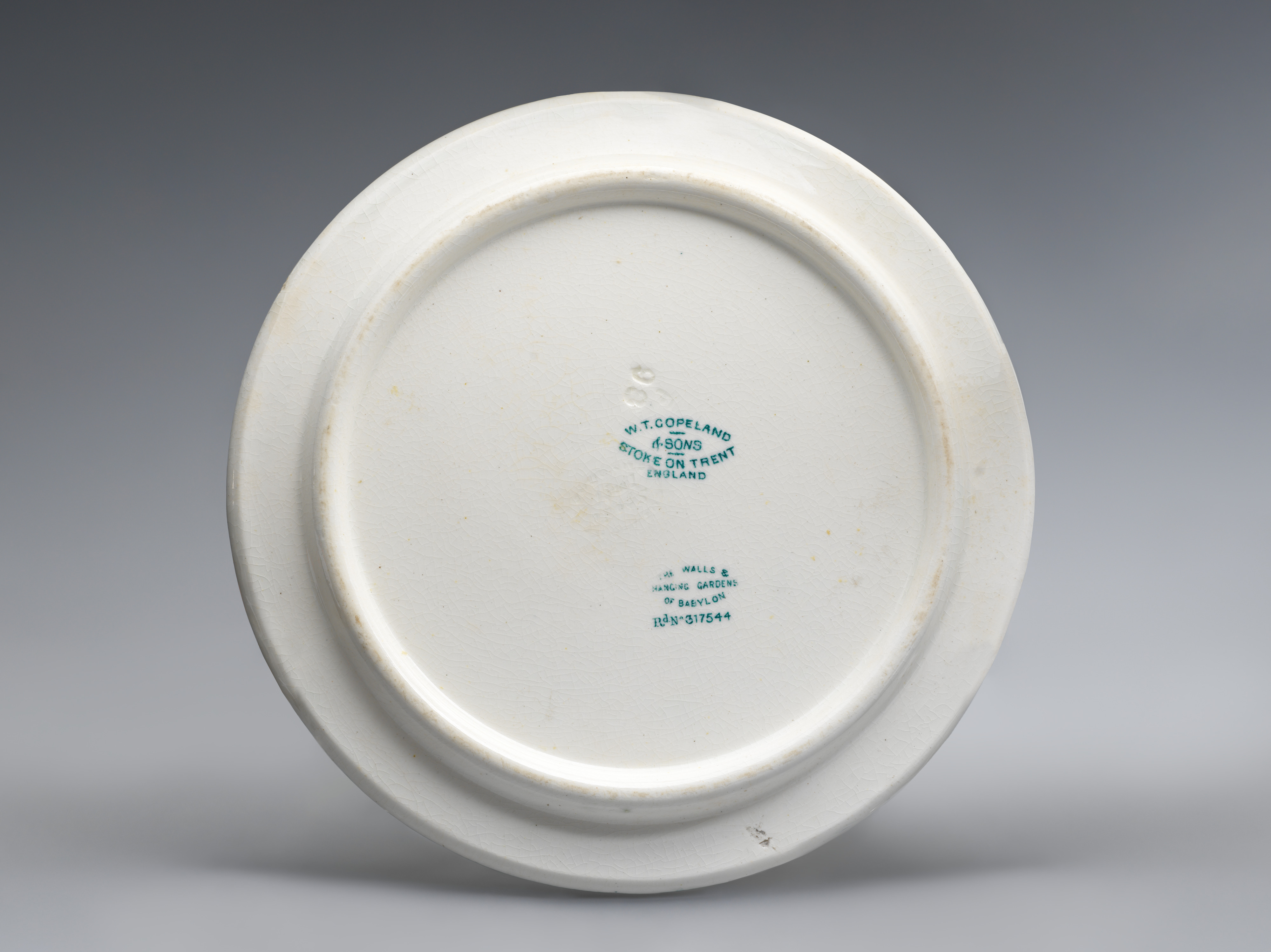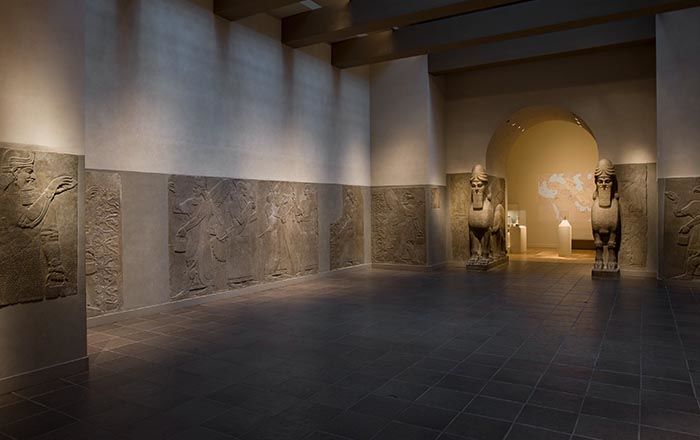Dish: The Walls and Hanging Gardens of Babylon
Not on view
Following the excavation of Assyrian palaces in the mid-nineteenth century, ancient Mesopotamian imagery began to be used in European decorative arts, including jewelry and ceramics. Publicity in the form of news coverage and popular books around the excavations, removal of many sculptures from sites in northern Iraq to England and France, and public spectacles such as the reconstructed ‘Nineveh Court’ in the Crystal Palace at Sydenham, London, fostered a fascination with Assyria and Assyrian art among the Victorian public. Babylonia, Assyria’s neighbor to the south, was of interest for the same reason: both were known popularly, especially through the Bible but also through classical sources.
The story of the hanging gardens of Babylon, known in different forms from multiple ancient Greek and Latin authors, inspired a variety of speculative reconstructions and imaginative visions. The design for the hanging gardens as shown here is ultimately derived from that of the British artist John Martin, whose huge 1819 painting The Fall of Babylon was adapted into a popular lithograph. Martin was working before the excavations in Mesopotamia, and used a combination of Roman, Egyptian, and Indian sources to imagine Babylonian architecture. His works were apocalyptic in tone and depicted catastrophic events, but here the setting has been adapted into the opposite: an ancient idyll, with a figure looking out from the hanging gardens across the River Euphrates to the towering Temple of Bel described by Herodotus, which in European art was sometimes conflated with the Tower of Babel.
Bel, "Lord," was an epithet commonly used for Marduk, Babylon’s patron deity. Archaeology would later confirm that next to his primary temple at Babylon, Esagila, there was indeed an enormous temple-tower, or ziggurat, named Etemenanki, "the Foundation Platform of Heaven and Earth." The exact origin of the story of the hanging gardens is debated: there must have been royal gardens at Babylon, though they have not been firmly identified by archaeology, but some scholars argue that the fantastic hanging gardens of Greek legend are actually based on spectacular royal gardens at the Assyrian capital of Nineveh. A prominent addition in the foreground, not present in Martin’s images, is an Islamic minaret with crescent moon, presumably meant here as an ancient symbol but also associating the image with contemporary West Asia.
This image cannot be enlarged, viewed at full screen, or downloaded.
This artwork is meant to be viewed from right to left. Scroll left to view more.




